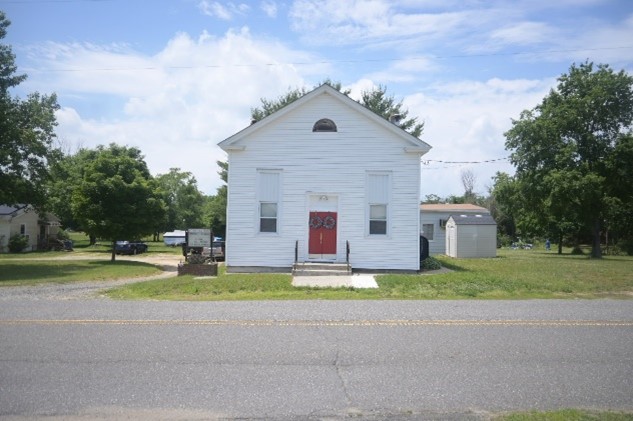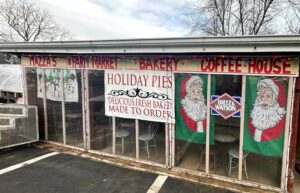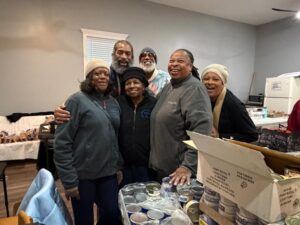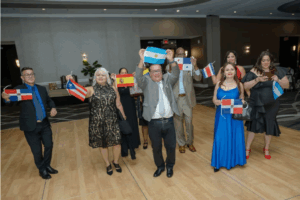Preserving Black Landmarks in South Jersey

Feature Photo of Mt. Zion A.M.E. Church, located at 172 Garwin Rd in Woolwich Township. Photo by Emmanuel Young.
EDITOR’S NOTE: This story was produced as part of the Center for Cooperative Media at Montclair State University’s South Jersey Information Equity Project fellowship and supported with funding from the Independence Public Media Foundation.
BY EMMANUEL YOUNG | For AC JosepH Media
SWEDESBORO — Across South Jersey, many towns have historical sites of significance to the history of African Americans.
In Gloucester County, an old schoolhouse that predates desegregation and a church that once served as a stop along the Underground Railroad are two historical landmarks that play a crucial role in preserving Black history for future generations.
The Historical and Educational Lodge-Hall Preservatory Inc. (H.E.L.P. Inc.) educates and advocates for preserving and restoring sites within the Woolwich and Swedesboro townships of Gloucester County. Founders Elaine Edwards and Sarah Lucile Stewart-Mitchell started the organization to work with local historians and community members and educate visitors about the history of African Americans who’ve lived in those towns.
“H.E.L.P. continues to unveil African-American history by recognizing past generations’ contributions, rich heritage, and legacy, to restore and preserve our historical sites, traditions, and experiences,” said Frank Dumas, Director of Historical Information. Currently, the organization hosts community service programs, such as food drives, and conducts public and private tours of local Black historic sites.
“We don’t get that many opportunities to celebrate our culture and heritage,” said Sherry Hall, Director of Community Programs. “H.E.L.P. allows us to shine a light on our community and on how strong and resilient we are.”
The Black History landmarks of Gloucester County
The Richardson Avenue School, located at Richardson Avenue and 2nd Street in Swedesboro, was built in 1931 and served as a “separate but equal” school. It housed three teachers and 140 students in a small two-story building with no fire escapes, three bathrooms, poor heating, and overcrowded classrooms.
“It broke every single one as far as occupancy and fire and safety codes,” said Hall. “They did not care; they let those kids in the building and were sanctioned by the city, state, and county government.”

The school closed in the fall of 1942, and classes were moved to the Auburn Avenue school, just two miles away. The Auburn Avenue schoolhouse, the last segregated school built in New Jersey, served the community until 1942. That building was demolished on December 26, 1995, but The Richardson Avenue schoolhouse remained and was listed on the National Register of Historic Places in 1998. The inside of the building is no longer open to the public.
Schooling the Past
“We used to hold summer school for students in the old schoolhouse,” said Hall. “We hope that we can open it up as a summer school for the local students and hold tours inside again as we did in the past.”
The school is about 12 miles away from another historic site. The Mt. Zion A.M.E. Church once helped enslaved people escape from the South and cross into New Jersey during the early to mid-1800s as a stop on the Underground Railroad.

Located at 172 Garwin Road in Woolwich Township, Mt. Zion, AME was part of a network of passages and safe houses where runaway slaves could find shelter, protection, and supplies.
The Mt. Zion Base
The church also served as a base from which abolitionists relayed messages to those escaping slavery. Harriet Tubman operated the route for 10 years, and the line went from South Jersey to New York. The church was listed on the National Register of Historic Places in 2001.
Mt. Zion A.M.E. Church, which sits across from Kingsway Regional High School and Middle School, is still a place of worship today, but its infrastructure is in poor condition.
The trapdoor used to hide runaway slaves is still under the rug after all these years. H.E.L.P. members volunteer to give tours of the church. The group has also started planning 2023 events, such as tours for teachers and MLK day of Community Service activities, and has petitioned for grants to preserve the sites better.
“If those walls can talk, it could tell so much about what has happened in this church,” William Corsey III, a descendant of a slave who found sanctuary at the church, said.
“The history of this church and the school is more than a landmark, it’s a story that everyone should know, and kids should be taught regardless of age.”
Follow Us Today On:
Note from AC JosepH Media: If you like this story and others posted on Front Runner New Jersey.com, lend us a hand so we can keep producing articles like these for New Jersey and the world to see. Click on SUPPORT FRNJ and make a contribution that will do directly in making more stories like this available. Thank you for reading!




